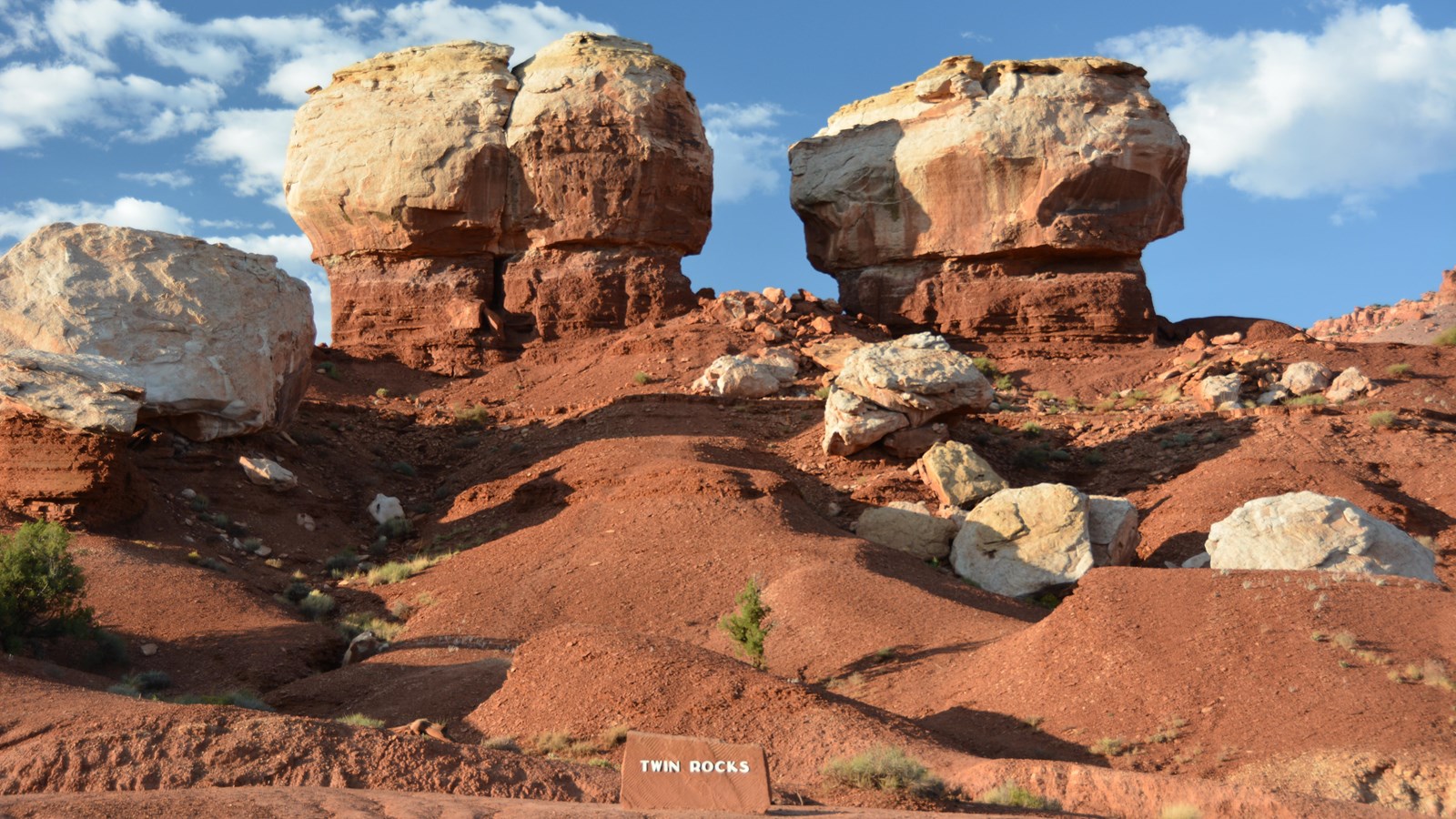Last updated: June 6, 2025
Place
Twin Rocks Viewpoint

NPS / Chris Roundtree
The balancing act of Twin Rocks is the result of a process called differential erosion. Simply put, different layers of rock are breaking down at different speeds. Differential erosion also produces the hoodoos of Bryce Canyon National Park and the goblins of Goblin Valley State Park. The orange bottom half of Twin Rocks is the Moenkopi Formation. The white, top half is the Shinarump Member of the Chinle Formation. A landscape of rivers and streams in a tropical climate created the Chinle Formation, about 220 million years ago. The Shinarump Member is made of chunky gravel and cobbles, formed by those ancient rivers. It is tougher than the mudstone of the Moenkopi Formation below. The Shinarump protects the Moenkopi like an umbrella. But the Moenkopi still erodes on the sides. This relationship has produced a large boulder balanced on a small, shrinking pedestal. Twin Rocks will someday collapse and join the other white boulders on the ground below.
The cliffs of Meeks Mesa rise above the highway on the north. They form a barrier between you and the northern reaches of the Waterpocket Fold. This area is a wild, rugged, roadless zone of sandstone fins and faults.
As you drive the straightaway leading to the next stop, Chimney Rock will loom over the road. Much like Twin Rocks, Chimney Rock is a column of Moenkopi Formation. The white boulder on top is the Shinarump Member of the Chinle Formation.
The cliffs of Meeks Mesa rise above the highway on the north. They form a barrier between you and the northern reaches of the Waterpocket Fold. This area is a wild, rugged, roadless zone of sandstone fins and faults.
As you drive the straightaway leading to the next stop, Chimney Rock will loom over the road. Much like Twin Rocks, Chimney Rock is a column of Moenkopi Formation. The white boulder on top is the Shinarump Member of the Chinle Formation.
